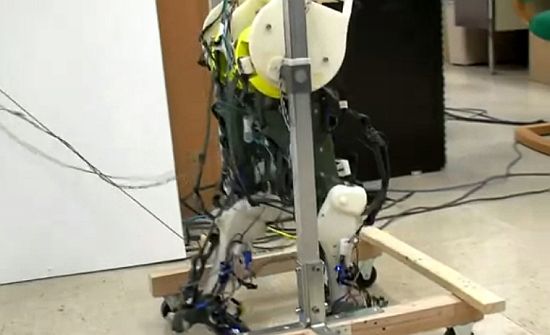A robotic walk had never been this perfect before. Created by a team of researchers at the University of Arizona, the robotic set of legs follows human walking gestures by utilizing human sensory feedback pathways. It could enable scientists to realize how babies develop walking capabilities. Moreover, it could help them devise newer ways to enable patients with spinal cord-injury to resume walking as soon as possible.
Researchers claim it to be the first model that imitates human ways of walking in biologically accurate manner. The neural and musculoskeletal architecture has neatly been engraved into the robot to realize that ideal human-like movement. Just as a human body relies on central pattern generator (CPG) for generating rhythmic muscle signals, certain embedded sensors deliver information to similar artificial half-center CPG of the robot to facilitate limb movement.
Arizona researchers assume that similar half-center CPG allows babies to learn simple walking patterns. Over time, they develop complex walking patterns. The study, which has published in IOP Publishing’s Journal of Neural Engineering, further suggests methods for people with spinal cord injuries to relearn walking after the injury.
Via: Science Daily



